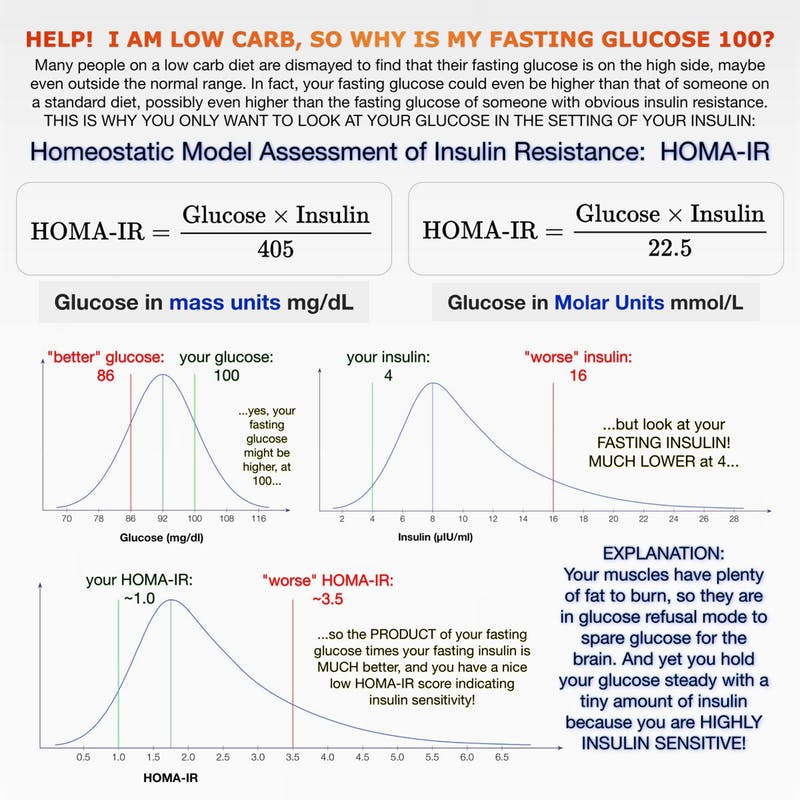Does anyone know if the degree and duration of the dawn effect (i.e. the increase in blood sugar in response to cortisol) is related to the degree of insulin resistance (IR)?
My understanding is that the body releases cortisol and some other hormones approximately 8 hours after we go to sleep, so that blood glucose levels increase slightly to help us prepare for waking and becoming active. It is also my understanding that this normal process happens to everyone, even metabolically healthy individuals. However, the glucose release appears to be higher and is sustained for a longer period of time in people with IR, because cellar uptake and depletion of glucose is impaired (this is my presumption and I would appreciate any links to science that confirms this).
If my understanding is correct, do you think it would be possible to monitor and assess improvements in IR using the dawn effect as a surrogate for improving metabolic function?, Specifically, based on how much the magnitude and/or duration of your dawn effect declines over time, in response to a period of low carb consumption?
I have not been able to find out what is a typical magnitude and/or duration for the dawn effect glucose spike for metabolically health individuals. It would be useful to know what is a normal BG spike and how long does it take for this spike to return to baseline. Considering, I am essentially OMAD, it should be relatively straightforward to track the time it takes for BG to get back to baseline without introducing an interfering event.

